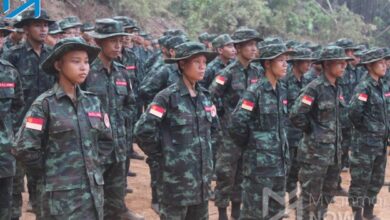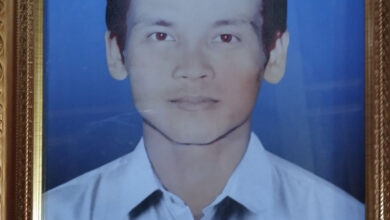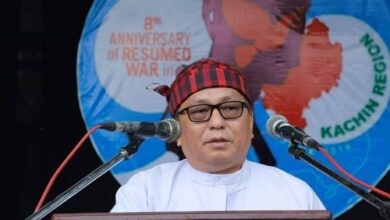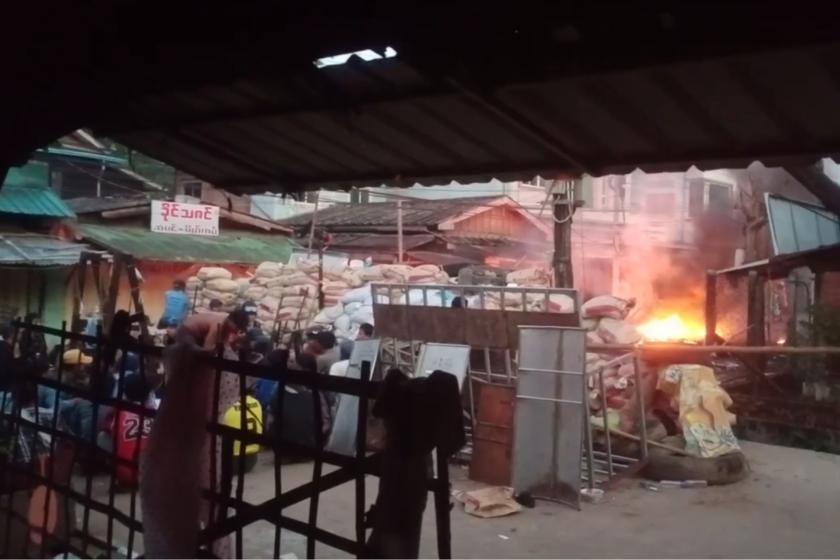
The town of Bago came under siege by the junta’s troops on Friday, with the armed forces killing several dozen people in a lethal attack on an anti-regime protest camp.
At least 82 people were murdered in the April 9 crackdown, according to both local relief organisations and the Assistance Association for Political Prisoners– which has been monitoring the junta’s violence.
In a pre-dawn attack that reportedly involved heavy artillery, the armed forces crushed a key protest stronghold on Ma Ga Dit Road in the eastern part of Bago, according to locals.
Several young protesters who took cover near and in the camp, which was protected by sandbag barricades, were killed in the ambush.
Myanmar Now previously reported on Friday night that around 60 people were estimated to have been killed in the regime assault, according to sources who had spoken to eyewitnesses. They said that bodies had been piled inside the compound of Zeyar Muni, a local pagoda.
An eyewitness who spoke to Myanmar Now on the condition of anonymity on Saturday said that he had seen the bodies of several people stacked inside both Zeyar Muni pagoda and a nearby school compound on Friday.
He lives in Hmor Kan ward, where the pagoda is located.
“[The troops] were stationed at the pagoda compound. They started piling up the bodies on Friday morning,” he said.
The bodies of around 40 to 50 people had been seen near the pagoda’s eastern entrance, but not all were dead, the eyewitness said. Injured people had been placed alongside those who had already died, and could be heard moaning from the mass of corpses.
“The bodies and the wounded people were dragged away by them,” he said, referring to the troops.
Soldiers were seen moving the bodies from the pagoda on Friday night at around 11pm, shouting in a way that suggested they were drunk, the eyewitness near Zeyar Muni said.
“Although I am not related to the victims, I was really hurt. I could do nothing, but I had to watch this. I want to take back the bodies of those young people who were still alive,” the witness told Myanmar Now.
By Saturday morning, the pagoda appeared as it had before the crackdown– blood had been washed away, the bodies gone, and occupying soldiers cleared out, according to area residents.
At the time of reporting, it was not known to where the injured and dead were taken, or if there were any survivors.
Before the evidence was reportedly destroyed at Zeyar Muni pagoda, township authorities under the regime cut off electricity in Bago from 7pm until 10pm on Friday, using that period to further terrorise residents through raids on homes, locals said.
“They cut off electricity throughout the whole town. After that, they carried out arrests from [a list of] names in the areas where [protest] defence lines were raided,” a Bago resident said. “The exact number of people arrested is not yet known. Some fled their homes. Some escaped to safer places.”
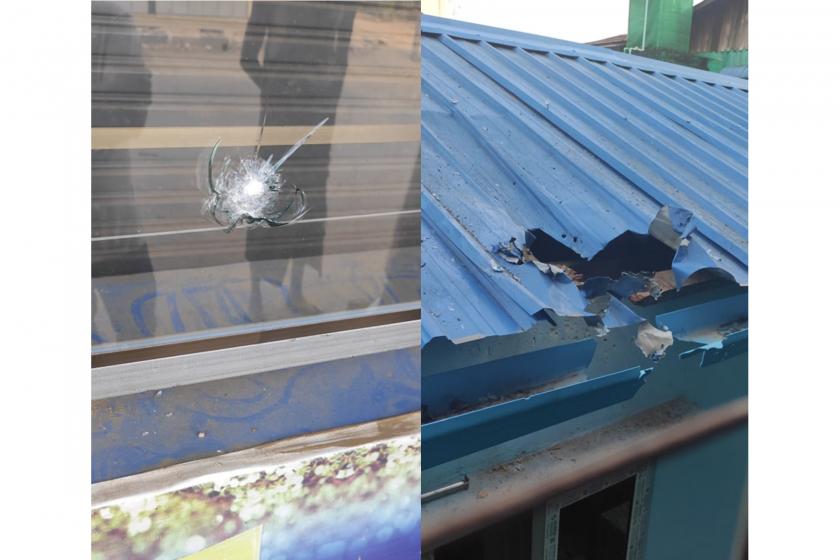
A junta-run newspaper claimed on Saturday that only one person had been killed after Bago residents attacked the armed forces, and blamed locals for inciting violence.
On Saturday, some of the bodies of those who had disappeared the day before began to appear.
Thirty-two-year-old Thiha, also known as Thet Oo, was found at a morgue on Saturday, according to family members who had heard he was arrested on Friday but were unable to confirm his whereabouts.
They went to the morgue and found his body there the following day, with a gunshot wound to the thigh and bruising to his face and the back of his head, Thiha’s brother Kyaw Zin Khant told Myanmar Now.
Bago residents of wards near Ma Ga Dit and San Taw Dwin roads said that troops announced over loudspeakers on Saturday that people were required to stay in their homes between 10am and 3pm in order for the armed forces to continue to search houses in the area.
The affected wards were Socialist, Pon Nar Su and Inn Winn. Hundreds fled these neighbourhoods, as well as the nearby wards of Alin Yaung and Hmor Kan, since all are known to have defence teams established to protect anti-regime protest strongholds.
Soldiers also raided the home of local Bago protest leader Myo Ko on Saturday, but he managed to evade arrest because he had already gone into hiding, he told Myanmar Now.
“The soldiers destroyed my entire house. They smashed everything in the house. They also took away three motorbikes, food, and US$1,000 kept inside a bookshelf,” Myo Ko said, adding, “They are worse than robbers. This is fascism.”
Even after the lethal crackdowns in eastern Bago on Friday, protesters in the western part of the town– including Kyaukkyisu, Ywathit and Zinetaung wards– again initiated marches against the regime on Saturday.
At at least 82, the April 9 death toll is the second highest in a single day since the military began violent crackdowns on protests following the February 1 coup; during that time, however, it remains the highest number of casualties in one day in a single location. Parts of Yangon, such as Hlaing Tharyar, saw at least 50 deaths in a single day during the violent suppression of demonstrations in March.
The deadliest day nationwide remains March 27, on which more than 100 people were killed across the country by the armed forces.
In total, some 701 people have been murdered in Myanmar by the regime’s soldiers and police, according to the AAPP.
Neither the spokesperson for the junta nor members of a local police station could be reached for comment on the reports of murder, theft and destruction of property by the armed forces in Bago.
![Resistance fighters holding heavy weapons ammunition in central Myanmar. (Photo: Freedom Revolution Force [FRF])](https://myanmar-now.org/en/wp-content/uploads/sites/5/2024/04/438869056_443267851680128_1706386881626943924_n-390x220.jpeg)
